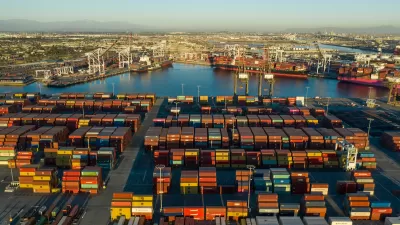The McKinsey Global Institute has just published a major report outlining four potential scenarios for urbanization in China.The main thrust of the report is that China needs to focus less on growing its cities and more on making them efficient and productive. Given the massive levels of capital investment Chinese cities have seen over the last 20 years, it makes sense that the country's urban planners need to find ways to squeeze more capacity out of these systems. After all, as McKinsey projects, another 350 million people will need to be accommodated, some 250 million of them as rootless rural migrants.
The McKinsey Global Institute has just published a major report outlining four potential scenarios for urbanization in China.
The main thrust of the report is that China needs to focus less on growing its cities and more on making them efficient and productive. Given the massive levels of capital investment Chinese cities have seen over the last 20 years, it makes sense that the country's urban planners need to find ways to squeeze more capacity out of these systems. After all, as McKinsey projects, another 350 million people will need to be accommodated, some 250 million of them as rootless rural migrants.
While McKinsey forecasts that the most likely trajectory, given no intervention, is a dispersal of urban population growth to a much larger array of mid-sized cities (which is China means settlements of 1.5-5 million people!). The report argues that while the central government can't directly control urban growth, it can utilize infrastructure spending and political muscle to concentrate growth in a handful of larger cities, reducing land and energy consumption and concentrating domestic talent and foreign investment in highly productive clusters.
Along with the full report is an interactive feature that lets you play out some of the projections. Watching the entire eastern seaboard of China turn into a more-or-less continuous sprawl of urbanization is fascinating. I wonder how Europeans might have felt in the 1960s watching the same thing for North America (they had to make do with the static maps of Jean Gottman's Megalopolis).
A summary of the report is available in the McKinsey Quarterly.
While we're on it, anyone wishing to understand the last 20 years of Chinese urbanization (and the deep historical context of the last 100 years) ought to be reading Tom Campanella's stupendous book Concrete Dragon (Amazon), published earlier this year.

Alabama: Trump Terminates Settlements for Black Communities Harmed By Raw Sewage
Trump deemed the landmark civil rights agreement “illegal DEI and environmental justice policy.”

Planetizen Federal Action Tracker
A weekly monitor of how Trump’s orders and actions are impacting planners and planning in America.

The 120 Year Old Tiny Home Villages That Sheltered San Francisco’s Earthquake Refugees
More than a century ago, San Francisco mobilized to house thousands of residents displaced by the 1906 earthquake. Could their strategy offer a model for the present?

In Both Crashes and Crime, Public Transportation is Far Safer than Driving
Contrary to popular assumptions, public transportation has far lower crash and crime rates than automobile travel. For safer communities, improve and encourage transit travel.

Report: Zoning Reforms Should Complement Nashville’s Ambitious Transit Plan
Without reform, restrictive zoning codes will limit the impact of the city’s planned transit expansion and could exclude some of the residents who depend on transit the most.

Judge Orders Release of Frozen IRA, IIJA Funding
The decision is a victory for environmental groups who charged that freezing funds for critical infrastructure and disaster response programs caused “real and irreparable harm” to communities.
Urban Design for Planners 1: Software Tools
This six-course series explores essential urban design concepts using open source software and equips planners with the tools they need to participate fully in the urban design process.
Planning for Universal Design
Learn the tools for implementing Universal Design in planning regulations.
Clanton & Associates, Inc.
Jessamine County Fiscal Court
Institute for Housing and Urban Development Studies (IHS)
City of Grandview
Harvard GSD Executive Education
Toledo-Lucas County Plan Commissions
Salt Lake City
NYU Wagner Graduate School of Public Service






























